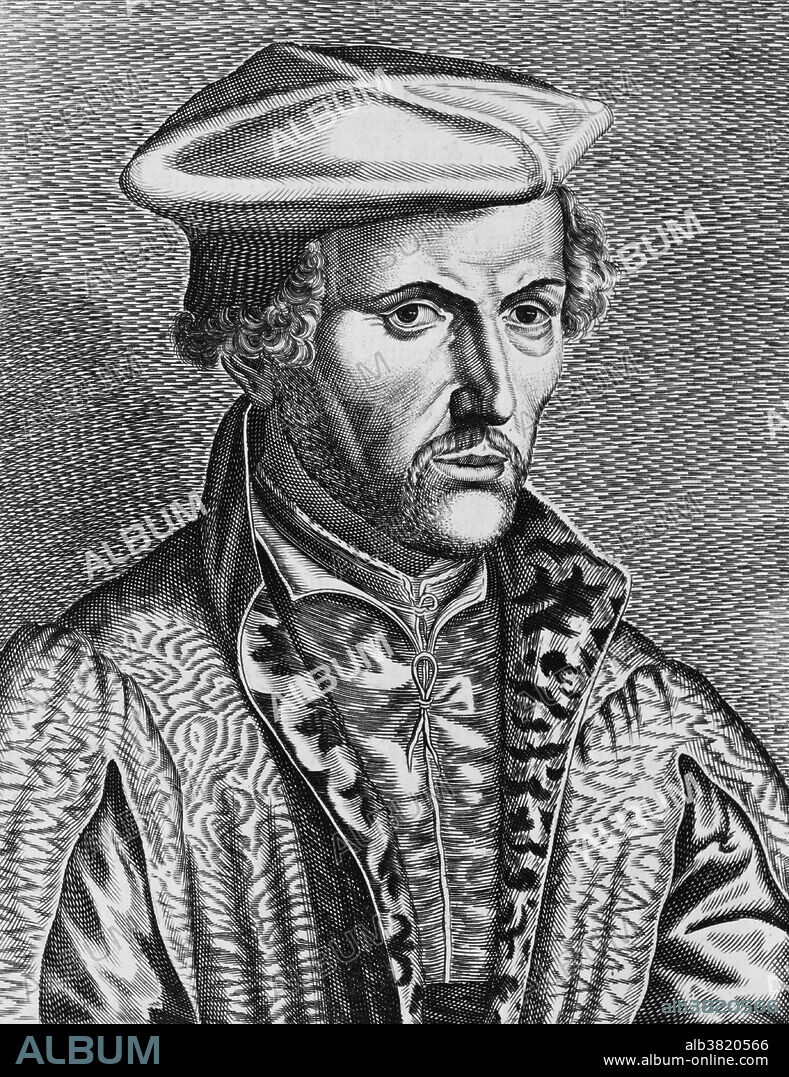alb3820566
Gemma Frisius, Dutch Polymath

|
Zu einem anderen Lightbox hinzufügen |
|
Zu einem anderen Lightbox hinzufügen |



Haben Sie bereits ein Konto? Anmelden
Sie haben kein Konto? Registrieren
Dieses Bild kaufen.
Nutzung auswählen:

Titel:
Gemma Frisius, Dutch Polymath
Untertitel:
Siehe automatische Übersetzung
Gemma Frisius (December 9, 1508 - May 25, 1555), was a physician, mathematician, cartographer, philosopher, and instrument maker. He studied at the University in Leuven where received the degree of MD in 1536 and remained on the faculty for the rest of his life. While still a student, Frisius set up a workshop to produce globes and mathematical instruments. He became noted for the quality and accuracy of his instruments, which were praised by Tycho Brahe, among others. In 1533, he described for the first time the method of triangulation still used today in surveying. Twenty years later, he was the first to describe how an accurate clock could be used to determine longitude. He created or improved many instruments, including the cross-staff, the astrolabe and the astronomical rings. His students included Gerardus Mercator (who became his collaborator), Johannes Stadius, John Dee, Andreas Vesalius and Rembert Dodoens. He died in 1555 at the age of 46.
Bildnachweis:
Album / LOC/Science Source
Freigaben (Releases):
Bildgröße:
3600 x 4675 px | 48.2 MB
Druckgröße:
30.5 x 39.6 cm | 12.0 x 15.6 in (300 dpi)
Schlüsselwörter:
16. JAHRHUNDERT • 16. JH. • BERÜHMT • BERÜHMTE PERSÖNLICHKEIT • EUROPAEER (F M) • EUROPAEER • EUROPÄER (F M) • EUROPÄER • EUROPÄISCH • ILLUSTRATION • ILLUSTRATIONS • INSTRUMENTENMACHER • KARTHOGRAFIE • KARTOGRAFIE (KARTE) • KARTOGRAPH • KARTOGRAPHIE • MANN • NOTABEL • PERSON • PERSöNLICHKEITEN • PERSÖNLICHKEITEN • PHILOSOPHIE • PROMINENZ • WISSENSCH.: KARTOGRAPHIE • WISSENSCH.: PHILOSOPHIE
 Pinterest
Pinterest Twitter
Twitter Facebook
Facebook Link kopieren
Link kopieren Email
Email
